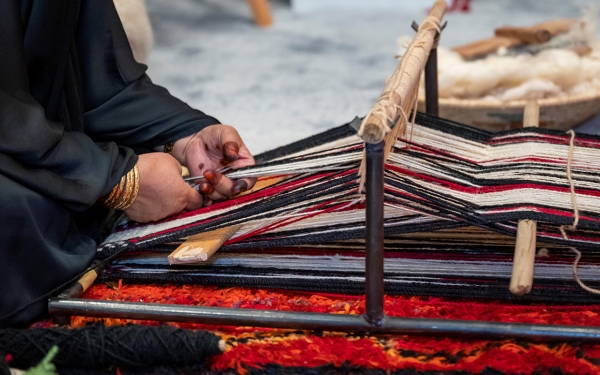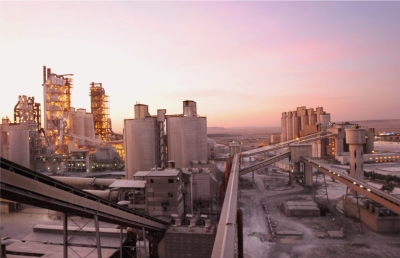


The Textile Industry in the Kingdom of Saudi Arabia is one of the consumer and light manufacturing industries in the country. It includes weaving and making carpets, tents, abayas, blankets, towels, and garments. It is among the consumer industries that cater to the growing demand of the local market in this field.
The national regulations and laws in the Kingdom have specified the types of textile products and defined them as raw, semi-worked, semi-manufactured, manufactured, semi-made-up, or made-up of products, which are exclusively composed of textile fibers, regardless of the mixing or assembly process employed.
The history of textile industry in the Kingdom
The textile industry is one of the traditional industries in the Kingdom, and some regions of the Kingdom are known for weaving al-Sadu. This craft has flourished and its arts diversified, encompassing tents, carpets, clothing, curtains, and fabrics adorned with various colors, designs, patterns, and motifs.
Najran Province had a special reputation for the quality of its textile products. Wealthy individuals from the Arabian Peninsula used to boast about obtaining these products and wore them during their celebrations and seasons. Among these textiles was the 'Burd,' known as the 'Najrani Hibr', which was one of the most expensive garments of that time. It is similar to the Mishlah or Bisht worn today.
The fame of Najran Province extended, and its traditional textile industries continued, using various materials, including wool in its different types, goat hair, fleece, cotton, muslin, linen, and silk. These textiles were often adorned with various patterns, especially those made from wool. Among these patterns were Sibr, Hami, Hajib, Natrah al-Kabira and al-Saghira, Farakh, and Batha.
Many products are still adorned with these decorations, such as the Majra and Rada'a, which are small mattresses, the Hadar, which is a long and wide mattress, the Bisat, which is a type of carpet often black in color, and the Kharj, which is a container used to carry luggage on the backs of livestock. Additionally, there is the Batanah, linings used to insulate the interiors of tents.
The evolution of the textile industry in the Kingdom
The implementation of laws and regulations in the Kingdom has contributed to enhancing the quality of the textile industry. The Technical Regulation for Textile Products issued by the Saudi Standards, Metrology, and Quality Organization in 2018 stipulates that a multi-fiber textile product shall be labeled or marked with the name and percentage by weight of all constituent fibers in descending order, the relevant standards shall be applied to determine the percentages of constituent fibers while taking into consideration that the permissible tolerance is 5 percent of the percentages of the main fibers mentioned in the labels.
Regulating the textile industry
For multi-component textile products, the regulation specifies that each textile product consisting of two or more parts, and does not have the same fiber content, the product shall have a label indicating the fiber content of each component, and the exception is only when the parts in question are not the main linings.
The standards also stipulate that when a textile product consists of more than one piece with the same fiber content and is usually an integrated unit with a single name, it may have only one collective label. The presence of non-textile parts of animal origin shall be indicated in the textile product, by using the following statement: 'Contains non-textile parts of animal origin' on the labeling of textile products displayed in the market.
The quality of textile products in the Kingdom
In an effort to enhance quality and safety, Article Five of the regulation stipulates that textile products displayed in the Kingdom’s markets shall meet the requirements of safety, consumer health, and environment conservation from the damages caused by the product’s accessories, such as buttons, ropes, and yarns in children's clothing, damages caused by materials used in fire-resistant products, and damages caused by chemicals used in the textile products, to ensure non-leakage or displacement of such chemicals to the skin or the environment during use, maintenance, cleaning, and washing.
Textile industry growth in the Kingdom
The textile industry in the Kingdom has witnessed successive developments in line with the expanding consumer market. This has led to the proliferation and growth of textile factories. During the Eighth Development Plan, the number of textile factories was around eighty in 2004, and by the end of the plan in 2008, the number had increased to eighty-four factories.
The number of operating factories in the textile, garments, and leather industry rose to approximately 209 establishments in 2009.
According to economic indicators, factory investments have increased over the years. The number of textile factories reached around ninety-four in 2012, increased to ninety-eight in 2013, then reached 101 in 2014. The number declined in 2015 to eighty-five factories before rising again in 2016 to ninety-three.
An important development in investment procedures in the textile industry occurred in June 2016, as the Saudi government allowed foreign investors to own 100 percent of retail and wholesale trade. This contributed to boosting the growth of the textile sector in the Kingdom.
Textile investments in the Kingdom
The development and investment in the textile sector in the Kingdom continue to progress. By the end of the second quarter of 2022, the number of productive textile factories reached around 103.
The Industrial Fund, currently known as the Saudi Industrial Development Fund, has been providing support to this sector through financing. In 2020, the number of loans provided to the textile industry amounted to approximately three loans totaling SAR21 million. The cumulative number of loans reached 132 loans with a total value of SAR2.56 billion. The revenue in 2021 reached SAR2.69 billion.
Related quizzes
Related articles

